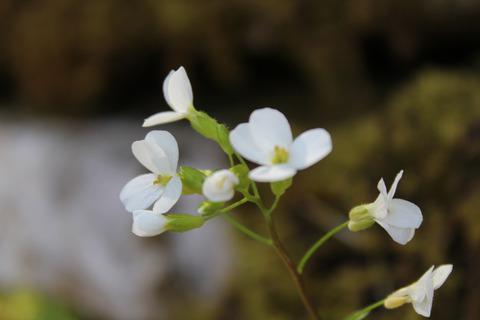当前位置:
X-MOL 学术
›
Funct. Ecol.
›
论文详情
Our official English website, www.x-mol.net, welcomes your feedback! (Note: you will need to create a separate account there.)
Phenotypic plasticity in floral scent in response to nutrient, but not water, availability in the perennial plant Arabis alpina
Functional Ecology ( IF 5.2 ) Pub Date : 2021-06-19 , DOI: 10.1111/1365-2435.13866 Victoria J. Luizzi 1, 2 , Magne Friberg 2 , Hampus Petrén 2
中文翻译:

响应养分而非水的花香表型可塑性,多年生植物阿拉比斯高山植物的可用性
更新日期:2021-08-09
Functional Ecology ( IF 5.2 ) Pub Date : 2021-06-19 , DOI: 10.1111/1365-2435.13866 Victoria J. Luizzi 1, 2 , Magne Friberg 2 , Hampus Petrén 2
Affiliation

|
- Floral scent is an important mediator of plant–pollinator interactions. Multiple recent studies report ample intraspecific scent variation among populations and individuals. Yet, few studies have estimated effects of phenotypic plasticity on floral scent in response to differing environmental factors.
- In this study, we investigated the effects of nutrient and water availability on floral scent in self-compatible and self-incompatible populations of the perennial herb Arabis alpina. We subjected greenhouse grown plants to different nutrient and water treatments in a crossed design, examined the effects on floral scent emission rate and composition, compared the level of plasticity to that of other plant traits, and conducted hand-pollinations of nutrient-limited individuals to test for a potential allocation cost of scent production.
- For both self-compatible and self-incompatible populations, the per-flower scent emission rate was 1.2–4 times higher when nutrients were abundant, but this effect explained little variation in scent emission rate and was limited compared to plasticity in flower number. There was no effect of water treatment on scent emission. Additionally, neither treatment had an effect on the composition of the floral scent, and there was no detectable trade-off between scent and seed production that would imply a cost of floral scent production.
- Overall, while per-flower floral scent emission displayed limited phenotypic plasticity in response to nutrient conditions, the total amount of scent emitted by plants may increase more strongly at higher nutrient availabilities due to an increase in flower production. Therefore, our results suggest that fitness benefits due to increased scent emission rates under favourable nutrient conditions might depend on the extent to which floral scent serves as a long- or short-distance pollinator attractant for the focal plant species.
中文翻译:

响应养分而非水的花香表型可塑性,多年生植物阿拉比斯高山植物的可用性
- 花香是植物与传粉媒介相互作用的重要媒介。最近的多项研究报告了种群和个体之间大量的种内气味变化。然而,很少有研究估计表型可塑性对花香气味的影响,以响应不同的环境因素。
- 在这项研究中,我们调查了养分和水分的可用性对多年生草本高山阿拉伯树 (Arabis alpina)自交和自交不相交种群的花香的影响。我们以交叉设计对温室种植的植物进行不同的营养和水处理,检查对花香散发率和成分的影响,将可塑性水平与其他植物性状的可塑性水平进行比较,并对营养有限的个体进行人工授粉以测试香味生产的潜在分配成本。
- 对于自相亲和和自相不相容的种群,当营养丰富时,每朵花的气味释放率高 1.2-4 倍,但这种效应解释了气味释放率的变化很小,并且与花数的可塑性相比是有限的。水处理对气味释放没有影响。此外,这两种处理都对花香的成分没有影响,并且在香味和种子生产之间没有可检测到的权衡,这意味着花香生产的成本。
- 总体而言,虽然每朵花的花香散发出响应养分条件的表型可塑性有限,但由于花卉产量的增加,植物散发出的香气总量可能在养分利用率较高的情况下增加得更强烈。因此,我们的结果表明,由于在有利的营养条件下增加气味排放率而带来的健康益处可能取决于花香作为焦点植物物种的长距离或短距离传粉媒介引诱剂的程度。



























 京公网安备 11010802027423号
京公网安备 11010802027423号